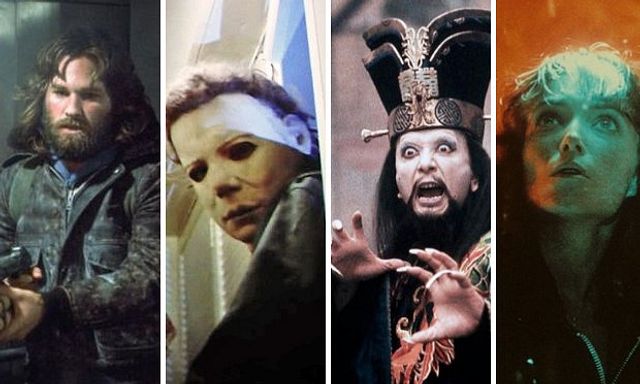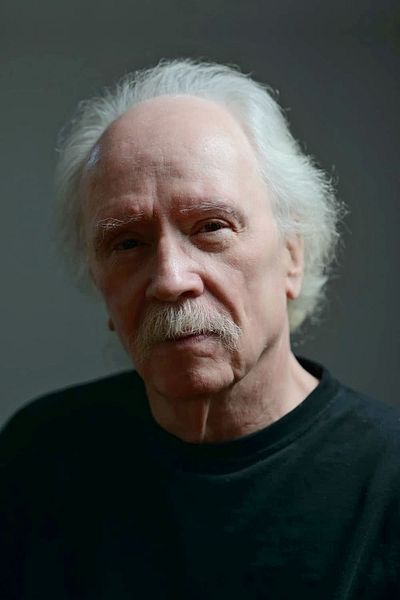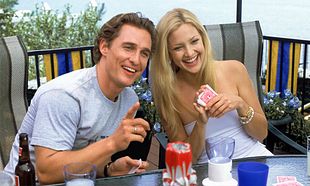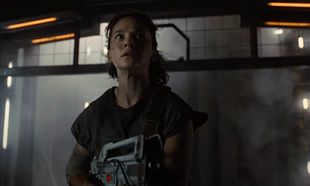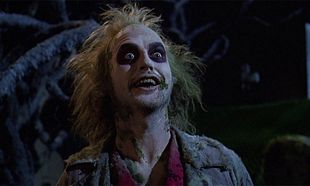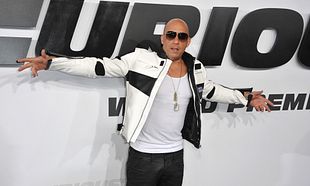John Carpenter's 'The Thing' has been added to Netflix Ireland & UK as of this week.
In our feature interview with the man back in 2016, Carpenter openly admitted that he's less focused on filmmaking nowadays and more interested in "having a good time" with his life. Looking back over his many works, it's clear that Carpenter has had a profound impact on genre filmmaking - something very few directors can say with the same conviction that he can.
While his work on the successful remake of 'Halloween' was confined to scoring it and acting as an executive producer, it's telling that director David Gordon Green referenced Carpenter's visual style throughout the movie, making it feel as close to a sequel as you could think of.
Whether John Carpenter ends up directing again remains to be seen, but for now, he has an incredible body of work in his stead.
Here's a ranking of his eighteen theatrically-released films, beginning with...
18. 'The Ward'
Despite having a cast of talented actors - Amber Heard, Mamie Gummer, and Jared Harris - and a reasonably engaging script, 'The Ward' is John Carpenter's last gasp as a director and it's a disappointing one. While there is a certain stateliness to the film, it's clear that Carpenter just wasn't interested in making horror films any more and was using his many bags of tricks to wring scares out of the audience. The big takeaway from 'The Ward' is that it can't be his final theatrically-released film. It can't. Somebody needs to give him a script and a budget to make that full-blown Western he's always wanted. John Carpenter's career cannot end on 'The Ward'. It just can't.
17. 'Memoirs Of An Invisible Man'
There's a reason most people forget that John Carpenter did a film with Chevy Chase and Daryl Hannah. It is the most un-John Carpenter film you could possibly think of. The story behind 'Memoirs...' is arguably more interesting than the film itself. Essentially a vanity project for Chevy Chase, 'Ghostbusters' director Ivan Reitman was originally lined up to direct. However, when he discovered that the script was less of a zany comedy, Reitman backed out. He and Chase would fall out over this decision, whilst legendary screenwriter William Goldman walked away from the film, saying he was "too old and too rich for this shit." John Carpenter, meanwhile, didn't bother asking for his title above the film as he knew there was no reason to do so. In the end, Carpenter claimed that the entire process was a paycheque and that Warner Bros. were "in the business of making audience-friendly, non-challenging movies."
16. 'Village Of The Damned'
It says a lot that John Carpenter refers to 'Village Of The Damned' as "a contractual obligation", because it's clear that he was truly disinterested in the film and it shows in a lot of various facets. For one, the casting in the film is so intrinsically wrong that it's almost laughable - Mark Hamill as a priest? Come off it. Not only that, the idea of creepy children was already well-worn by this stage as 'Children Of The Corn' saw to that aspect perfectly well. You've also got the now-hilarious special effects when the children use their powers and you've got Carpenter's mish-mash of a musical score. After 'The Ward', it's Carpenter's weakest and most unimaginative horror film.
15. 'Christine'
Although Christine is now viewed with the same kind of goofy delight that one looks at 'Maximum Overdrive', 'Christine' is still a bad film. It's a so-bad-it's-good-film, sure, but it's objectively bad. The effects are cheap and clunky, the acting is porn-levels of dire and the story itself is Stephen King at his most silly and excessive. But, it's a goofy film with a sense of fun that can't be denied and the soundtrack is one of his best.
14. 'Ghosts Of Mars'
It's not surprising that 'Ghosts of Mars' was John Carpenter's last film before 'The Ward'. When you look at it, you can see exactly why. Carpenter acquiesced to so many studio demands - Ice Cube as Snake Plissken-lite, shooting it at night to cover over the cheap sets, a poorly thought-out script - in order to get the film done and dusted. Not only that, there isn't the same verve that his early work had. You can tell that he wasn't all that interested and it's a sloppy film that just didn't work. It's a shame because, had he attempted this a few years earlier - maybe even before 'Escape From L.A.' - there would have been a cracking film there.
13. 'Prince Of Darkness'
What an odd film 'Prince Of Darkness' is. Mixing supernatural horror, science-fiction and unintended comedy, the film was universally panned upon its release and is only now beginning to get something of a critical reevaluation. For all the faults with 'Prince Of Darkness' - and there are MANY - it's still an awful lot of fun to watch. Just give it a due amount of acknowledgement to the silliness of it all and you'll be good.
12. 'Vampires'
After he finished 'Escape From L.A.', John Carpenter seriously considered retiring from making films altogether. With 'Vampires', he saw a chance to make a Western - the one genre he's always wanted to explore - dressed up as a splashy horror film. 'Vampires' is more closer to something like 'The Wild Bunch' or 'Major Dundee' than it is to Leone Westerns. There's a very clear line between the good guys and the bad guys; Woods is a savage hunter whilst Thomas Ian Grifiith is a savage vampire. That blandness, in a way, really does limit the film's potential and hobbles Carpenter's choices in terms of story. It's a shame because if Carpenter was given the chance to make his own Western - instead of having to dress it up as something else - there could be something really interesting.
11. 'In The Mouth Of Madness'
Like 'The Fog', 'In The Mouth Of Madness' is Carpenter by way of Lovecraft with Stephen King thrown in for good measure as well. The script, written by Michael DeLuca, sees a writer changing the very fabric of reality through his words and, in doing so, drives himself around him completely insane. The shifting, maniacal changes in tone and theme are reminiscent of 'Dark Star' and its probably one of the last times Carpenter tried to do something truly outlandish in his work. As it stands now, 'In The Mouth Of Madness' is a more than respectable attempt to get a grip on HP Lovecraft without going insane in the process.
10. 'Escape From L.A.'
'Escape From L.A.' tried to rekindle that same anger that 'Escape From New York' had, but instead it came across like a TV movie version of the same film. Kurt Russell manfully attempts to keep himself up above water, but there's only so much you're able to with the same story. Still, it does feature some interesting moments - particularly the basketball scene. Or, y'know, the horrible surfing scene. It's... yeah, take a look. Peter Fonda was a fantastic choice as a surfer dude, not to mention Steve Buscemi taking the role made by Harry Dean Stanton in the first.
9. 'Dark Star'
Carpenter's first completed film is acknowledged as '2001: A Space Odyssey' by way of Monty Python, but with a talking bomb strapped in there. More than anything, 'Dark Star' pointed to many aspects of Carpenter's future career - its pitch-black humour, its reliance on financial inhibition to fuel creative choices, its use of music as a narrative throughline and just the general grunginess of it all. Strange and experimental, to be sure, but pleasingly familiar with the passage of time.
8. 'The Fog'
If 'Halloween' was Carpenter using minimalism as a tool for horror and the incredible debut album, 'The Fog' was the difficult second album. The same points, tones and themes were there - but it didn't gel quite as well as it did the first time out. Nevertheless, 'The Fog' is still an effective film and is unfairly looked when discussing Carpenter's work. The idea of a town enveloped in evil is a fascinating one and gives it a Lovecraftian vibe to it, something he'd explore again and again throughout his career. Not only that, the use of the widescreen format worked perfectly with the expansive visuals and there's a real sense that the fog is taking on a physical form. It's overlooked, but worthy of your time.
7. 'They Live'
Although it's reduced to the fight sequence - which is excellent, in fairness - 'They Live' is so much more than just that. The unique visual language and production design is incredible Like a lot of Carpenter's more sci-fi work, 'They Live' has a deeply pessimistic view of both his fellow man and authority in general, and its views on society in general were deeply subversive then and remain equally so to this day. Carpenter really was an anti-establishment director and his stories, none moreso than 'They Live', reflect that thinking.
6. 'Big Trouble In Little China'
It's amazing to watch 'Big Trouble In Little China' in a world where Marvel and DC battle for supremacy in the box-office. 'Big Trouble In Little China' was, when you boil it right down to its core elements, a comic-book strip come to life. The glossy visuals, the silliness of the whole thing, the huge action setpieces and Kurt Russell dropped into the middle of it somehow - there's no denying that Carpenter's work paved the way for the likes of Joss Whedon and James Gunn to make pulpy, self-aware comic-book adaptations. Not only that, 'Mortal Kombat' and a significant chunk of its character design owes a gigantic debt to 'Big Trouble In Little China'.
5. 'Escape From New York'
Although you might not think it, 'Escape From New York' has a lot of common markers with 'Star Wars'. It's all down to the lived-in, pre-existing world that they both inhabit and how they're shown so convincingly within a few short scenes. When you kick off 'Escape From New York', the future-world of 1997 is already there and references to off-screen events are littered throughout the story. Despite the fact that it's a fictional story, there feels like there's a life to it all. Kurt Russell created a character for the ages with Snake Plissken, creating an anti-establishment hero that would be a photo-negative to Dirty Harry's policeman - a lawless mercenary who cares about no-one except himself. Trivia tidbit - Jamie Lee Curtis was the voiceover for the introduction sequence.
4. 'Assault On Precinct 13'
Dark, grimy, violent - 'Assault On Precinct 13' was John Carpenter at his most feral and nasty. Taking large chunks out of Howard Hawks' 'Rio Bravo', 'Assault On Precinct 13' was a tough, sinewy, low-budget thriller that made no bones or excuses for its B-movie status. Helped by a fat, bassy score, deep shadows in the frame and horror aesthetics that he'd use over and over again, the film became a cult hit on its release in 1976. Its sharp, clean dialogue works beautifully with the tight direction and a pulsing narrative pushes the whole thing along a blistering pace.
3. 'Starman'
It's an oft cited fact, but it remains true to this day - directors who work in different genres rarely get the credit they deserve. The critical and commercial failure of 'Starman' directly contributed to John Carpenter's lack of work outside of the horror genre. Yet, looking at it now, it's maddening to see how it didn't go over with audiences. Easily Carpenter's most emotional and hopeful film, 'Starman' is a heartbreaking romantic drama-cum-road trip movie with a career-best performance by Karen Allen. Playing a recent widow, her husband Jeff Bridges reappears to her - except it isn't him, it's the form an alien has decided to take. Beautiful cinematography, a gorgeous soundtrack by Jack Nietzsche and huge performances, 'Starman' was Carpenter's most accessible film outside of his horror works.
2. 'Halloween'
With 'Halloween', John Carpenter popularised the slasher genre and birthed a long, long list of inferior clones - both in the 'Halloween' franchise and in horror itself. Back then, 'Halloween' was completely revolutionary. The idea of using a camera as a floating, all-seeing spirit that is an active participant was completely unusual. Casting Jamie Lee Curtis, herself a daughter of horror royalty, was an inspired choice. Carpenter's lean, tightly-wound directing blended perfectly with the austere visuals on screens. When you look at 'Friday The 13th', it's clear that there was something more artful going on in with 'Halloween'. Carpenter's choice, although dictated by restraints, still have an incredibly artful taste. It's a shame nothing has come close to it since then.
1. 'The Thing'
'The Thing' was released in the summer of 1982 and is one of those films that was blanked out by audiences, thanks in large part to Steven Spielberg's 'ET'. 'Blade Runner', 'The Wrath of Khan' and John Carpenter's 'The Thing' all suffered whilst Spielberg's twee sci-fi adventure sailed into the history books. 'The Thing' was, in many ways, the complete antithesis to 'ET'. Where Spielberg was hopeful, Carpenter was hopeless. In Carpenter's view of the world, aliens were singularly-minded, vicious, disgusting and completely insidious. They looked like us. The enemy was within. For our money, 'The Thing' is Carpenter's most perfectly realised film, capturing all the intense paranoia and minimalist leanings of his earlier work. Why the f*** this film was overlooked in '82 is still a mystery. It still holds up to this day.
